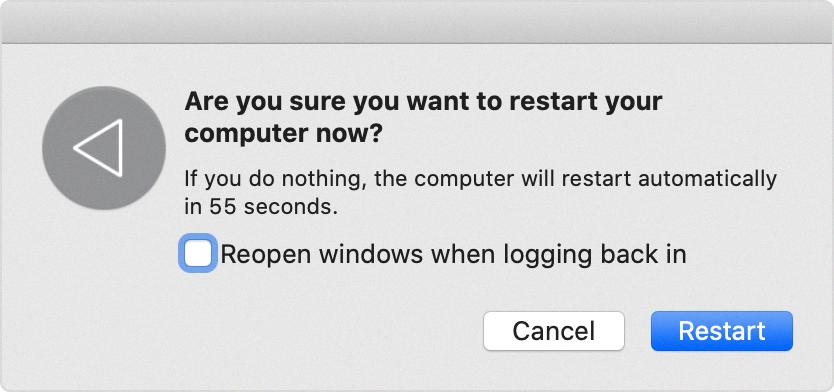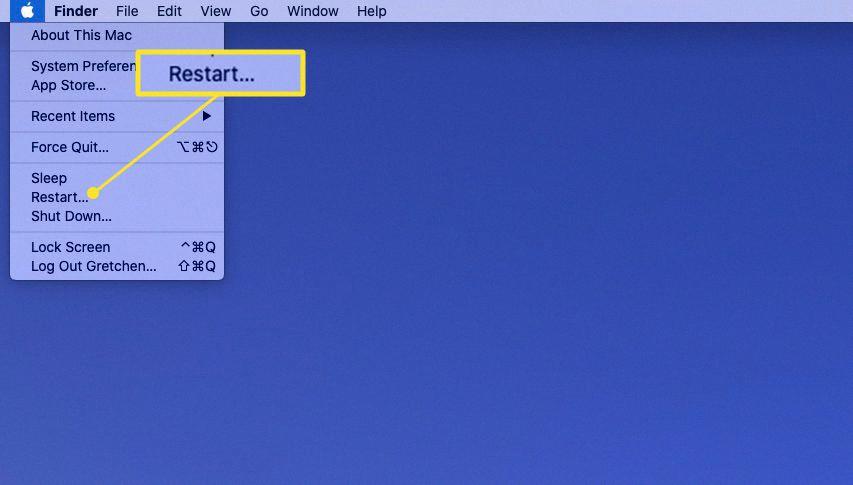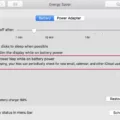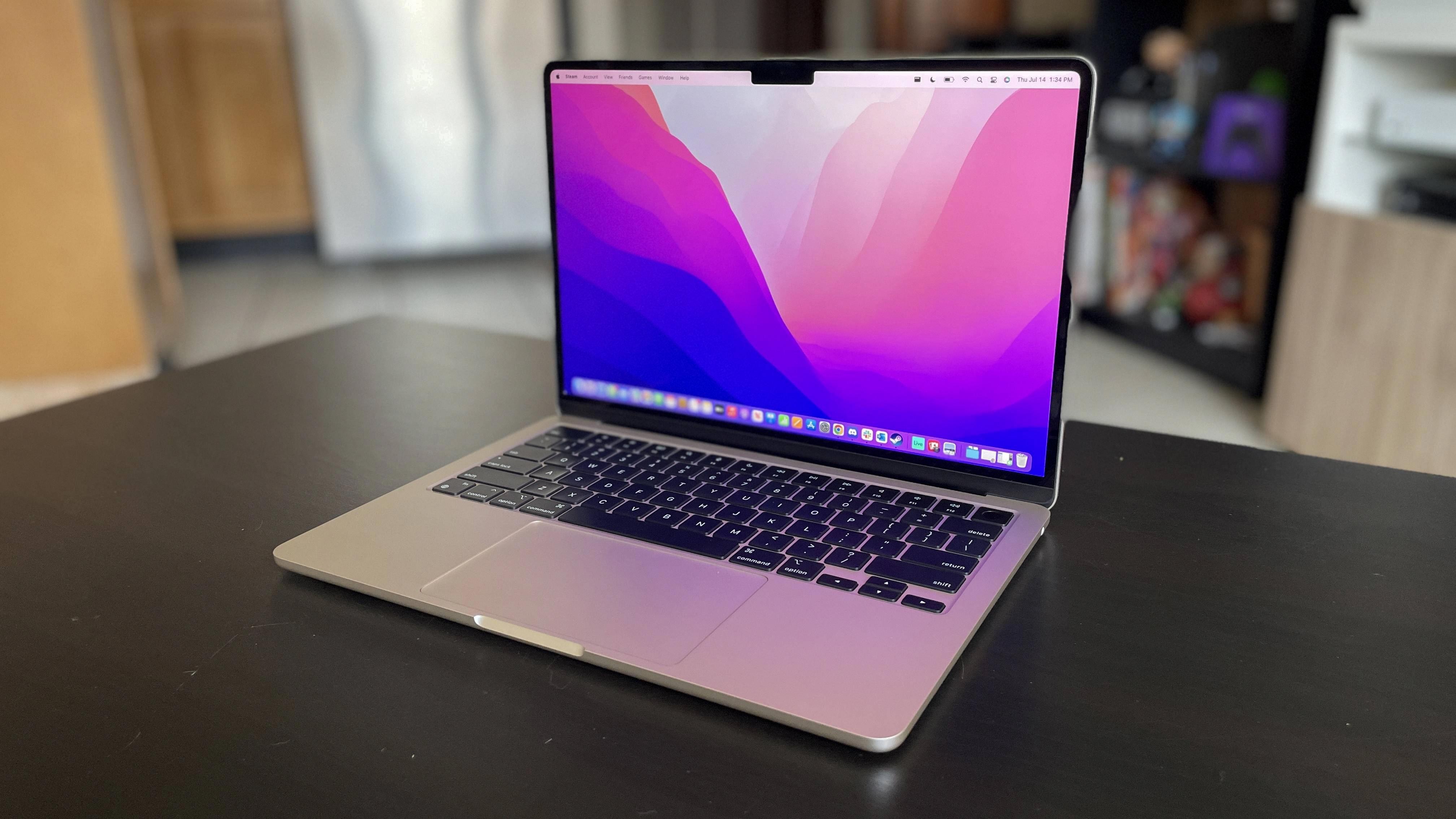Rebooting your Mac is a simple process that can help resolve many technical issues. Whether you need to reinstall software, reset your system settings or simply just get your computer running faster, rebooting it is often the recommended first step. This blog post will guide you through the steps of rebooting your Mac and explain why it can be beneficial.
First and foremost, it’s important to note that there are two types of reboots available on Mac computers: a soft reboot and a hard reboot. The soft reboot is the most commonly used type, which involves restarting the computer without having to shut it down completely. To do this, simply click the Apple logo in the top left corner of your screen and select “Restart” from the drop-down menu. Your computer will then start up again with all of your open applications and documents intact.
A hard reboot requires you to shut down your computer completely before starting it back up again. To do this, click the Apple logo in the top left corner of your screen and select “Shut Down” from the drop-down menu. Once your Mac has been completely shut down, press and hold down its power button for about 5-10 seconds until it turns back on again. This type of reboot is necessary if you need to reset any system settings or troubleshoot hardware issues on your computer.
It’s important to note that rebooting your Mac can benefit both its performance and security. When you restart your computer, any programs or processes that are running will be closed off so that they don’t take up too much memory or CPU usage over time. This can help free up space on your hard drive and keep everyting running at peak efficiency. Additionally, rebooting regularly helps protect against malicious software by wiping out any temporary files or cookies that could be tracking you online without consent.
In conclusion, rebooting is an easy way to improve both the performance and security of your Mac computer. For most situations, a soft reboot sould suffice; however if you need to reset system settings or troubleshoot hardware issues then a hard reboot may be required instead. We hope this blog post has been helpful in teaching you how to properly reboot a Mac!

Performing a Hard Reboot on a Mac
A hard reboot on a Mac is done by pressing and holding the Command (?) and Control (Ctrl) keys along with the power button (or the ?Touch ID? / Eject button, depending on the Mac model). This sould cause your Mac to shut down, and when you press the power button again it should turn back on. If this doesn’t work, try unplugging your Mac from its power source for a few seconds and then plugging it back in and turning it on. That should force a hard reboot.
Soft Rebooting a Mac
A soft reboot on a Mac is a way to restart the computer without losing any open documents or files. To perform a soft reboot, first shut down your Mac, then turn it back on and immediately press and hold the Option, Command, P and R keys together for about 20 seconds. During this time, your Mac may appear to restart. Once the 20 seconds are up you can release the keys and your Mac will reboot normally without closing out of any programs or documents that were open befre the reboot.
Rebooting a Mac: What Does It Mean?
Rebooting your Mac means restarting the operating system. This clears out any temporary files or data stored in the RAM memory, and gives you a fresh start with the system. Rebooting can help fix errors that may have occurred in the system, or just give it a chance to refresh itself. To reboot your Mac, simply go to the Apple menu and select ‘Restart.’ It’s a quick and easy way to reset your device without having to go through any lengthy process.
Performing a Hard Reboot
A hard reboot is a process that can be used to reset a device such as a smartphone or laptop when it is not responding correctly. To do this, you will need to fist grab the phone, making sure it is turned on. Then you must unlock the phone by entering your password or passcode. After that, hold down both the volume down button and power button simultaneously for around 10 seconds. Once you release both buttons, the phone will begin to restart and you should see a reboot screen appear. From here select ‘Reboot’ and wait for the device to restart, which usually takes around 5-10 minutes depending on your device. Once complete, you should be able to use your device as normal again.
Resetting a Mac Without Losing Data
To reset your Mac withut losing all your data and settings, you will need to use the built-in recovery tools. First, hold the Command + R keys on your keyboard until the Mac’s utility window appears. If it doesn’t appear, click on the menu bar and type ‘disk utility’. Then select Disk Utility from the options and click Continue. From here, select the format MAC OS Extended (Journaled) and click Erase. This will erase all data from your Mac but will not delete any of your personal files or settings. Finally, when prompted to Reinstall macOS, select Install and follow the instructions to complete the reset process.

Source: support.apple.com
Troubleshooting Mac Non-Responsiveness
It is possible that your Mac is not responding due to a technical issue, such as a software crash or a hardware problem. Some common causes include: an outdated version of macOS, an issue with your startup disk, corrupted system files, a failing hard drive, insufficient memory or storage space, incompatible software or drivers, malware or viruses, and overheating. In order to troubleshoot the issue further, you can try restarting your Mac by clicking the Apple menu at the top left of the screen and selecting Restart. If you cannot interact with the Apple menu (perhaps your mouse is unresponsive) try pressing Command-Control-Eject on a very old Mac or Control-Option-Command-Power button on a newer Mac. You can also try running a hardware test to identify any hardware issues. If you are stil having problems after trying these steps then we recommend contacting Apple Support for further assistance.
Rebooting a Laptop
Rebooting your laptop is a simple process that takes just a few seconds. To begin, make sure your laptop is powered on and then click the Windows Start button in the lower left of the taskbar. From there, you’ll see a power button symbol where you can select either Sleep, Shut down or Restart. If you’re looking for a hard reboot, press and hold the power button on the front of your laptop for approximately 5 seconds. Wait 30 seconds befoe powering it back on. After that, your laptop should be ready to use again.
Is Rebooting a Mac the Same as Restarting?
Yes, rebooting and restarting a Mac are the same thing. Rebooting a Mac is also referred to as restarting, power cycling, or soft resetting. This process shuts down and then restarts the system in order to clear any memory that may be causing issues or to complete an update.
How Often Should I Reboot My Mac?
It is generally recommended that you reboot your Mac at lest once a week, as this helps to keep the computer running smoothly and efficiently. Rebooting helps to clear out any temporary files that may be taking up space on your hard drive, as well as resetting any settings that may have been changed since your last reboot. Additionally, rebooting can help fix any errors or glitches that may be causing problems with your system. As a best practice, it is important to save all of your work before rebooting in order to avoid any data loss. All in all, rebooting your Mac once a week is an effective way to ensure optimal performance and reliability.
Restarting a Computer Using the Keyboard
To restart your computer using the keyboard, you will need to press Alt + F4 until all applications and windows are closed. Then, select “Restart” from the drop-down menu that appears, and press ? Enter. If the “Restart” option is not already selected, use the directional arrow keys to select it. Once you have done this, your computer will begin rebooting.
Does Rebooting a Laptop Delete All Data?
No, rebooting your laptop does not delete everything. When you reboot your laptop, any data stored in the computer’s memory is lost and the operating system is reloaded from the hard drive. However, any files stored on your hard drive will remain intact after a reboot. It is important to always save your work to avoid losing any information.
Is a Hard Reboot Safe?
A hard reboot is generally safe, as long as you don’t have any unsaved data. Hard reboots are usually used when the operating system has frozen, which means that no data is being written or saved. However, if you experience a sudden power outage or surge in electrical current, you may run the risk of data corruption. To guard against this, it’s best to use an uninterruptible power supply (UPS) to keep your system running safely and securely.

Source: lifewire.com
What is a Soft Reboot?
A soft reboot is a process of restarting a computer wthout cutting off the power supply or resetting any hardware. This can be done by using a software command such as Ctrl + Alt + Del (or equivalent) to initiate the reboot, or by selecting the restart option in the operating system. A soft reboot will generally take less time than a hard reboot, as it does not involve physically unplugging and plugging back in the power to reset any hardware. At the same time, it will preserve any open documents and programs that were running prior to the restart.
Reinstalling Mac: Does it Delete Everything?
No, reinstalling macOS of macOS Recovery does not delete everything. Reinstalling the operating system will replace the current version of macOS with a clean version, and no files or data will be erased in the process. However, it is important to note that whie reinstalling won’t delete your disk or existing files, it may be necessary to back up any personal data before beginning the process.
Troubleshooting a Mac That Won’t Boot or Gets Stuck on the Loading Bar
If your Mac won’t boot or gets stuck on the loading bar, there are a few steps you can take to troubleshoot the issue. First, press and hold the power button on your Mac for up to 10 seconds to force it to shut down. Once it has shut down, turn it back on and see if the issue persists. If so, press and hold the power button again until your Mac turns off. After this, try booting your Mac in Safe Mode by pressing and holding Shift while turning it back on. This will run a diagnostic check that can help identify any issues that might be causing the problem. If Safe Mode doesn’t work either, try resetting the NVRAM (nonvolatile random-access memory) by pressing Command + Option + P + R when you turn your Mac back on. This should clear out any settings that may be causing errors or preventing proper startup. If these steps don’t resolve the issue, contact Apple Support for further assistance or take your Mac to an authorized service center.
Troubleshooting Unresponsive Black Screen on Mac
It is possble that your Mac screen is black and unresponsive due to a lack of power. Make sure that the power adapter is securely plugged into both your computer and a power outlet. You should also disconnect any devices connected to your computer, except for the power adapter. If this does not resolve the issue, you may need to reset the SMC (System Management Controller) on your Mac or contact Apple Support for further assistance.
Rebooting Your Computer: What F Button to Press?
To reboot your computer, you need to press and hold the F8 key as your computer restarts. This will bring up a menu that allows you to select various options for booting your computer. Depending on the type of operating system installed, you may be able to select from options such as Safe Mode, Last Known Good Configuration, or even a specific version of Windows. Once you have selected the appropriate option for your needs, simply follow the instructions provided to reboot your computer.
Should I Power Down My Mac at Night?
It is generally recommended to shut down your Mac every 2-3 days, but it is not absolutely necessary to do so every night. Depending on your usage and how long you plan to be away from your Mac, a nightly shutdown may or may not be necessary. For instance, if you are going to bed and will not be usig your Mac for more than 36 hours, then a shutdown is a good idea. However, if you plan on using the Mac shortly after getting up in the morning, then a restart may be sufficient.
If you do decide to shut down your Mac eery night, make sure you save any unsaved work and close all open applications first. This will help ensure that when the computer restarts, all applications will reopen as expected and no data will be lost.
Conclusion
Rebooting a Mac is a simple process that takes only a few moments to complete. To reboot your Mac, press and hold the power button until your computer turns off. Once it has shut down, wait a few seconds and then press the power button again to turn it back on. If you have an older version of Mac OS, you may need to press and hold the power button for a few seconds until you hear two beeps or see an Apple logo bfore releasing the power button. Once your computer has restarted, you should be able to use it normally again. Restarting your Mac can help resolve certain technical issues and can also improve performance by clearing out memory usage and freeing up resources.








